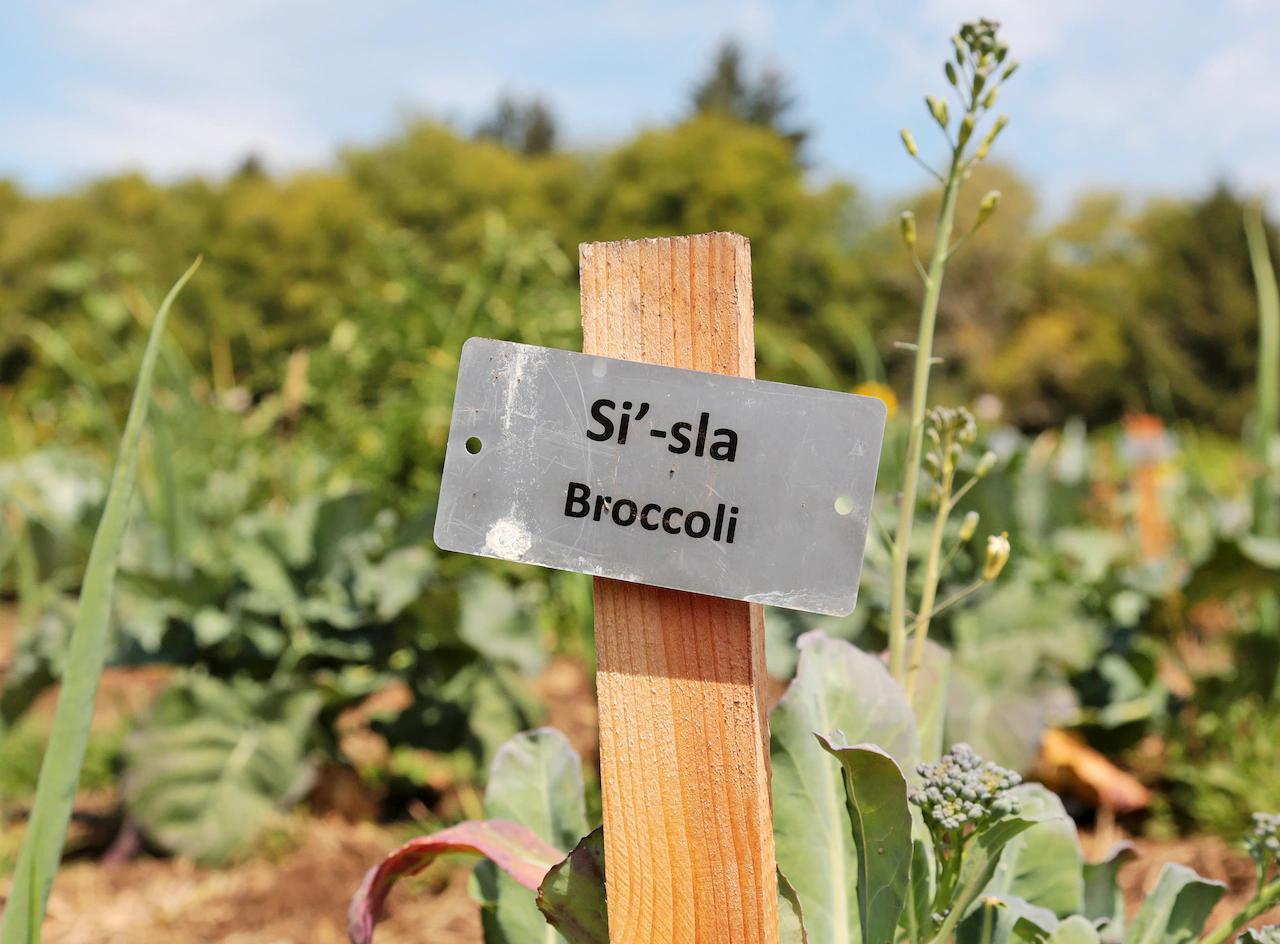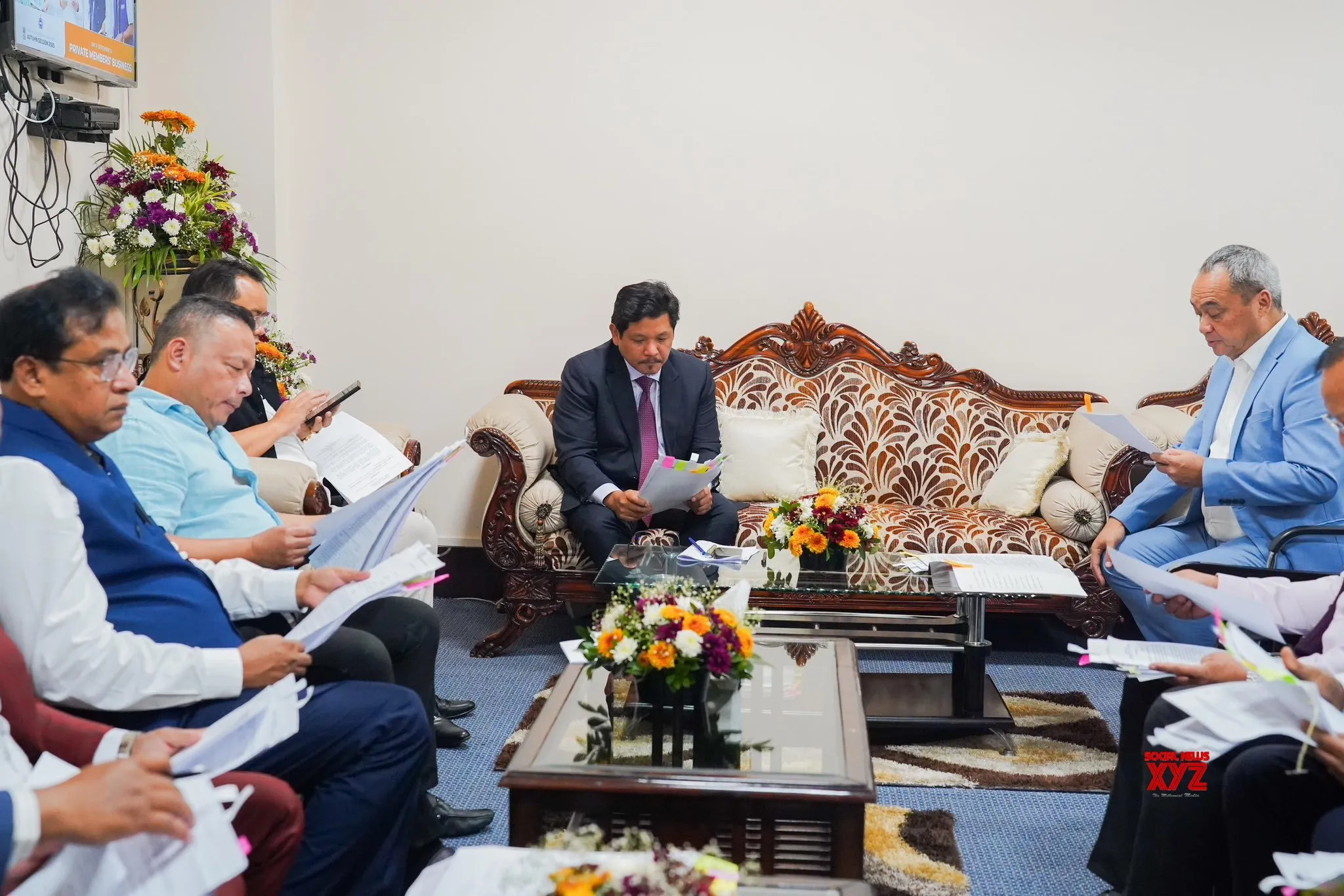
Each week, the Confederated Tribes of Siletz Indians sends out roughly 25 to 75 Food Sovereignty Boxes to the community. The boxes — which are free, and go to anyone in need — are packed with fresh vegetables and hand-picked herbs that come straight from the grounds of Tel-tvm’.
Also known as the Siletz Farm, Tel-tvm’ (pronounced tell-tum) is a 40-acre property in the Coast Range mountains just off the Pacific Ocean. Since purchasing the land in 2020, the tribe has worked to establish a 5-acre farm that has been sustaining the local community in more ways than one.
Zeph Mullins, who runs the farm as the tribe’s food sovereignty program manager, gave a tour on a bright summer day, pointing to all the plants growing from the land, each labeled with names both in English and the tribe’s Nuu-wee-ya’/Siletz Dee-ni’ language.
There are traditional first foods such as camas and yampah; a wide array of vegetables including kale, broccoli, squash and cabbage; seasonal fruits that range from strawberry plants to apple trees; a variety of culinary and medicinal herbs; a wildly diverse flower garden; and even sacred tobacco grown for ceremonial use.
That’s not to mention the roughly 20 acres of forest and wetland habitat at Tel-tvm’, where wild plants such as red alder, elderberry and willow can be harvested to make crafts, or medicine in the tribe’s apothecary.
“It’s a lot,” Mullins said with a laugh. “It’s a really young farm, but we all feel like this is an established program. This place is running extremely well.”
The farm, which didn’t have its first growing season until 2023, has quickly become a vital community resource, tribal leaders said. In 2024, it distributed 13,000 pounds of food as well as $116,000 of value in garden starts. All was distributed for free to help people not only eat, but to grow food themselves.
Considered a public health project, the farm is funded primarily through revenue generated by the tribe’s health clinic, according to Kurtis Barker, CEO of the Siletz tribe, though it has also received small grants from the Oregon Health Authority. It’s become an expensive program, he said, but it’s one that everyone in the tribe is heavily invested in.
Miranda Willams, executive health director for the tribe, said the tribe has spent about $3.5 million on the project since 2022, including a $1 million budget for 2025.
The project has been entirely “community directed,” she said, soliciting and incorporating feedback about what kinds of food should be grown at Tel-tvm’ and what kinds of programming should be included there. Already the farm has collaborated with behavioral health and work exchange programs. It’s become a popular weekend spot for families, who can harvest directly from the farm, and who have been requesting new additions like chickens or a pumpkin patch. Tribal members have expressed eagerness not only to receive from the farm but to have a hand in helping it grow.
“[Food] is always there when we’re gathering and we’re together,” Williams said. “People have an interest in that relationship and that connection. And it’s there, it’s very strong in our tribal membership and community.”
That’s exactly how Brandon Larrabee feels. A Siletz tribal member and devoted champion of the farm, who has also worked there as an intern and volunteer and who receives Food Sovereignty Boxes for himself and his grandmother, said the program is actively healing generational trauma around food security.
“After our people were removed up here, our family like a lot of the families were dirt poor for a long time, and just didn’t have access to good, quality, healthy food,” Larrabee said. “[We’re] trying to get to a place where the next generations won’t have to experience that.”
Larrabee said the generosity of the farm is passed on through the community. He cooks some of the food he receives for himself and his grandmother, and cans the rest to hand out to others. He recently boiled some of the farm’s daikon radishes to pair with broccoli and elk meat, then candied and jarred a harvest of jalapeños.
“Giving someone the gift of food that you either grew or harvested or processed yourself, that’s one of the highest gifts you could give someone,” he said.
Andrea Taylor, a tribal member who lives in nearby Toledo, said the farm is a positive force for the Siletz tribe, which has quickly embraced Tel-tvm’ as not just a health program but a gathering place. Taylor, who is a frequent volunteer, said even the tribal youth have flocked to the farm. That includes her youngest child, who has happily helped with plantings and harvests.
“It’s just an overall welcoming environment,” she said. “It’s the vibes, just good vibes all around. I think that’s what the farm grows … like adding love to your recipe.”
While the farm has been growing steadily, there is still more to be done. Water is a persistent issue, as the property does not have water rights to irrigate commercial crops. The tribe’s solution, a 100,000-gallon rainwater collection system, is impressive, but a barrier to growth, Mullins said.
But the farm, now in its third season, can’t help but grow. The people of Siletz are seeing to that. Mullins said the project quickly realized its goal of becoming a central hub for the community, suddenly finding itself at the center of everything. When the ceremonial salmon fishers need to get rid of their fish waste, they now know to take it to Tel-tvm’, where it will fertilize the orchards. And when the local school needs food for students, the farm provides it for free.
“We mentioned how many pounds of food we gifted or how many dollars of plant starts — those are just simple forms of capital,” Mullins said. But the farm delivers multiple forms of capital to the tribe, he said, like community, education and the benefits of spending time outside. “You get spirituality as well, you get to perform those activities in safe space.”
Picking a bunch of kale from Tel-tvm’ will save you a few dollars, and will come with the nutritional benefits, he said, but there’s also a great deal of value found in picking it with your community or cooking it with your family.
“For everything that we essentially spend out here, the value is compounded tenfold or more when we’re talking about the connections with our communities,” Mullins said. “It adds and adds.”



